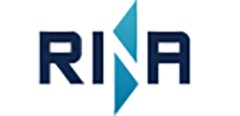Supporting the pathway to energy transition
THE shipping industry is facing challenging and exciting times as it works towards decarbonisation. Italian classification society RINA is supporting many projects and developments to facilitate the energy transition, but what can the industry expect going forward?
One of the biggest challenges in decarbonising shipping is knowing which technologies and new fuels will be the ‘winners’ for the future. No one has a crystal ball, and owners looking to invest today in newbuilds must choose solutions that are practical and economically viable.
Regulations will develop, along with market implements, such as emissions trading. Using the Carbon Intensity Index (CII), ships will be ranked and rated according to efficiency.
Fleet ratings will influence market competitiveness, as big organisations committed to faster routes to net zero select more efficient shipping options. Insurers and bankers will also favour greater efficiency, and ESG linkage to finance will mean vessels with lower emissions will be more likely to attract bonds and lines of credit.
What can be done today?
Slow steaming can be combined with other actions, such as reducing friction through improved hull hydrodynamics. Additionally, advancing digital fleet monitoring and management solutions offer a current solution to increase the efficiency of ship operations. Digitalisation will also be an important tool for monitoring fuel consumption and efficiency levels, ensuring data reliability for efficiency ratings, and providing vital intelligence for investment decisions.
What will the future hold?
When it comes to new fuels and technology, it is more difficult to predict the outcome for the future. Hydrogen and fuel cells will certainly play a part as a global energy vector, and RINA is already certifying hydrogen-powered trains. Ammonia, methanol and carbon capture and utilisation (CCU) also all have potential to take the industry towards net zero. However, ‘winning’ fuels and technology for the future will depend heavily on the approach of other market sectors.
CCU technology has an important role to play during the transition to new fuels. Captured CO2 has the potential to be used in industrial processes, to create synthetic fuels or blue hydrogen, or to be pumped and stored in old underground oil wells.
One of the challenges with carbon capture in shipping is the chemical complexity of the exhaust. The new dual-fuel LNG/hydrogen engine propulsion arrangement, given approval in principle for a medium range tanker and a very large crude carrier earlier this year, addresses the challenge by capturing CO2 molecules at the source and using them to produce hydrogen.
LNG alone produces lower emissions than fuel oil. By combining LNG with the ability to use increasing percentages of hydrogen over time, owners have a propulsion solution they can adopt today using proven technology without the need for onshore hydrogen infrastructure. Using LNG as a transition fuel also offers the potential for operation using synthetic or biofuels at a later date.
Reaching our goals together
It is natural that shipowners are wary of making any choice today that will create an obstacle in the future as the industry continues on the path of energy transition. Institutional stakeholders should try to guide owners with a common approach, make pathways clearer, and give proper incentives. Today, digital solutions and dual fuel engine configurations offer tangible ways to reduce emissions.
“In order to reach decarbonisation goals in time, shipping needs to be progressively more proactive. Other industries will help with ideas and confidence in the direction to take, which is why RINA’s business units — across marine, infrastructure, industry, energy and certification — are working closely together to recognise transferrable technology and ideas,” says Paolo Moretti, chief executive of RINA.
“RINA is also looking at new technology safety and risk assessments even before the development of prescriptive rules. Whatever the direction of the energy transition for the future, RINA will work aggressively to support the industry,” says Mr Moretti.

